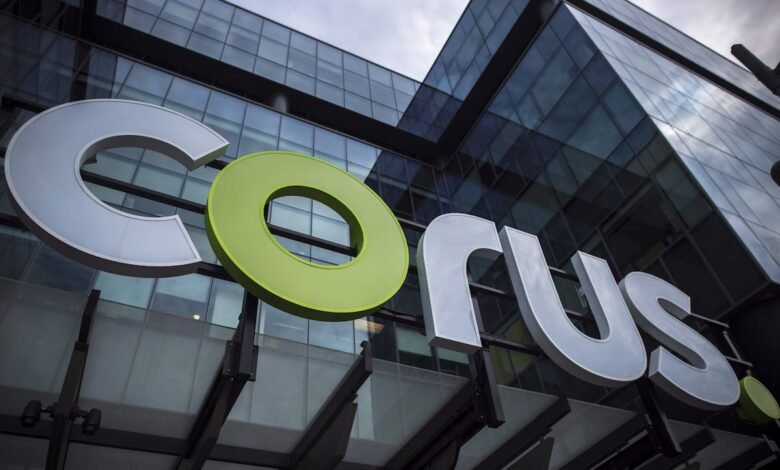Opinion: Corus Entertainment’s woes portend a bleak future for Canadian content

Corus signage in Toronto on June 22, 2018.Tijana Martin/Canadian Press
Dvai Ghose is the director of Ghose Investment Corp. His clients include Telus Communications Inc. He is the former head of global research and strategic development at Canaccord Genuity Group.
Corus Entertainment Inc. CJR-BT cut 35 jobs at Global News last week. This comes after Rogers announced that it had won multi-year Canadian rights deals from Corus for leading U.S. lifestyle content, including HGTV, Cooking Channel and Food Network.
Corus shares fell to $0.15, implying a market capitalization of just $29 million, below its $25 share price and $2 billion market cap at the end of 2014. The CEO Longtime CEO Doug Murphy has retired, and a TD report argued that the real value of equity may be zero, given net debt of $1.1 billion.
So what went wrong and what lessons can be learned for investors, regulators and the Canadian public?
Corus’s challenges boil down to a combination of consistently poor regulatory decisions that have favored giant global content providers like Netflix over national players: shifting audiences, rising U.S. content costs, the questionable acquisition of Shaw Media in 2016, poor execution and lack of substantial cost reduction.
Some of this is unique to Corus, but the most important part is not. Corus’ problems point to a future of American media dominance and diminishing Canadian content.
While online content has harmed all mainstream television content providers, Canadian companies have been particularly hard hit by Canadian Radio-television and Telecommunications Commission regulations, which were ironically designed to protect Canadian content. Mainstream Canadian content distributors such as Corus, Bell Media and Rogers Media have to spend up to 30% of their revenues on Canadian content regardless of profitability, while global giants such as Netflix, Hulu and Amazon Prime have historically been exempt.
Even today, as the federal government tries to level the playing field, these non-Canadian content distributors only contribute 5 percent of revenue to Canadian content.
However, the CRTC has been incredibly inflexible in applying these rules to broadcasters. The Canadian Association of Broadcasters has filed an application requesting the suspension of Canadian program expense requirements due to COVID-19. The CRTC rejected this request and ruled that any CPE shortfalls incurred during the pandemic must be paid by August 2024, despite economic hardship, while non-Canadian content providers were exempt.
A policy that was designed to help Canadian content flourish has led to discrimination against Canadian content distributors like Corus and in favor of global streaming giants like Netflix. This is not good for Canadian content and especially not for a debt-laden company like Corus.
In January 2016, Corus announced the acquisition of Shaw Media (formerly Canwest) for $2.65 billion debt-financed. The deal raised eyebrows, as the Shaw family controlled both the buyer and the seller.
US hedge fund Catalyst, a shareholder, argued against the acquisition, saying Corus overpaid by as much as $858 million, or 32%. “The Shaw family has a greater ownership stake and a greater economic stake in Shaw Media, so the [higher value of the] the transaction is being transferred from Corus to Shaw.”
Although Catalyst was defeated and the deal went through, it left Corus with a mountain of debt and declining cash flow, leading some to conclude today that Corus may have no equity value.
Corus also suffered from the need to secure US content through multi-year agreements, often with annual price increases. This makes it very difficult to offset declining advertising and subscription revenues. Avoiding US content would only provide a smaller audience.
Furthermore, Corus management must take some blame for its current precarious position. While Corus responded to the online threat from Netflix and Bell’s Crave by launching Stack TV in 2019, it lacked scale and compelling content and, after some initial success, lost momentum. Furthermore, although Corus’ EBITDA has declined from $525 million in 2021 to $317 million in the last 12 months, management has been slow to cut costs and Global News’ recent layoff of 35 Unifor members was arguably too small and too late.
So what does this mean for the future of Canadian content?
While Corus may be in a particularly weak position, its larger conventional peers such as Bell Media and Rogers Media are also suffering from an unenviable combination of industrial and regulatory pressure.
In time, Bell Media and Rogers Media may be the only major Canadian media companies left, but that’s because of their live sports rights and their giant parent companies. This, in turn, puts the future of Canadian content in a precarious position.




